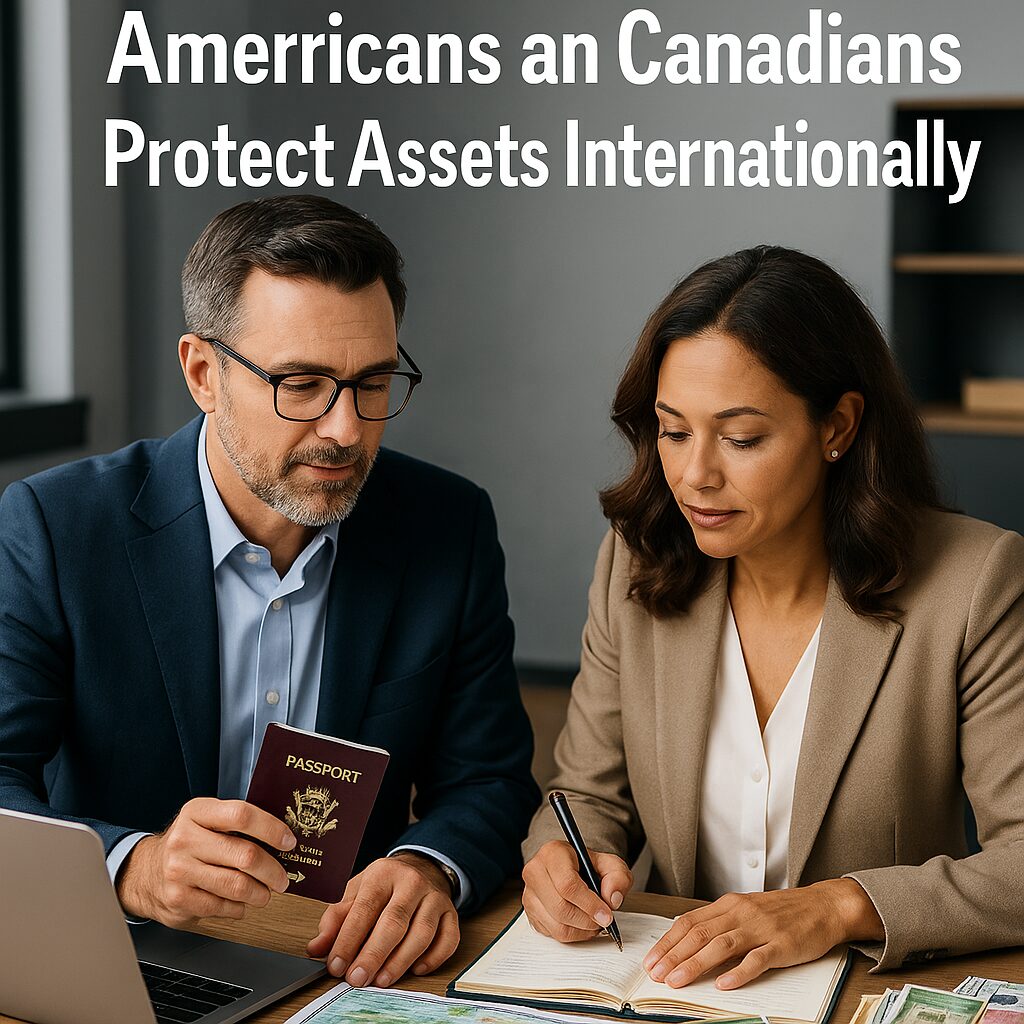For Americans and Canadians with significant savings, the question of how to keep wealth safe in an unpredictable world is no longer hypothetical—it’s urgent.
Over the past decade, economic instability, political changes, and inflation have eroded the value of savings for millions of people. In both the United States and Canada, higher taxes on capital gains, new reporting requirements, and tighter banking regulations are reshaping how wealth must be managed.
High-net-worth individuals have already responded. They diversify internationally—placing parts of their assets in jurisdictions that offer stability, privacy, and legal protection. This isn’t tax evasion; it’s smart, legal financial planning.
In this guide, you’ll learn how to safeguard your money across borders, legally reduce taxes, and unlock global investment opportunities that remain hidden from the average investor.
1. Why Cross-Border Wealth Protection Matters
Keeping all of your assets in one country is like keeping all your valuables in one house with no insurance. If something happens—a banking crisis, a lawsuit, or even a political shift—you risk losing more than you can afford.
For North Americans, there are three main reasons to diversify internationally:
- Economic Instability: Inflation and rising interest rates can erode cash holdings.
- Political Risk: Changes in tax policy can suddenly impact investment returns.
- Banking Security: Not all domestic banks offer the same level of protection or insurance for deposits.
Consider the 2008 financial crisis: even well-established banks faced collapse. Those who had offshore accounts in stable countries like Switzerland or Singapore were able to access their funds without restriction. This type of protection is not a luxury—it’s essential.
2. Popular Asset Protection Tools for North Americans
Cross-border wealth protection is not a one-size-fits-all approach. The right mix depends on your goals, risk tolerance, and financial profile. Here are the top tools used by Americans and Canadians:
a) Offshore Bank Accounts
Opening an account in a politically stable, financially strong country provides diversification in currency and jurisdiction. Look for banks that offer multi-currency accounts, robust online banking, and deposit protection.
b) International Trusts
By placing assets in a trust located outside your home country, you create a legal separation between yourself and your holdings. This can protect against lawsuits, creditors, and certain taxes.
c) Foreign Real Estate
Investing in property abroad not only diversifies your portfolio but can also provide rental income in foreign currency. In some countries, real estate ownership can open a path to residency or citizenship.
d) Precious Metals Stored Abroad
Holding gold or silver in a secure vault outside your home country can act as insurance against currency collapse or banking system failure.
e) Global Brokerage Accounts
Access to foreign stock exchanges allows you to invest in companies and industries that are growing faster than those in North America.
3. Tax Advantages of Going Global
One of the most misunderstood aspects of offshore planning is taxation. For Americans, the IRS taxes worldwide income—but there are legal ways to reduce the burden.
For U.S. Citizens:
- Foreign Earned Income Exclusion (FEIE): Exclude up to a certain limit of foreign-earned income from U.S. taxes if you meet residency requirements.
- Tax Treaties: Agreements between the U.S. and other countries to prevent double taxation.
- Deferral Strategies: Certain investment structures allow you to defer taxes until you bring the funds back.
For Canadians:
- Non-Residency Status: If you qualify as a non-resident, you may avoid paying Canadian taxes on foreign income.
- Treaty Benefits: Canada has agreements with multiple countries to reduce or eliminate double taxation.
Case Example:
A Canadian investor with holdings in the Cayman Islands was able to legally reduce annual tax liability by 40% through proper structuring and reporting.
4. Step-by-Step: Building an International Wealth Plan
Step 1 – Identify Your Goals
Are you focused on protecting existing wealth, generating income, or growing assets? Your answer will shape your strategy.
Step 2 – Select Jurisdictions
Choose countries with stable governments, strong banking privacy laws, and favorable tax regimes. Examples: Switzerland for banking, Singapore for currency diversification, Portugal for real estate.
Step 3 – Work with Specialists
Hire cross-border tax advisors, asset protection attorneys, and international bankers who understand your home-country regulations.
Step 4 – Stay Compliant
Full legal compliance is non-negotiable. File required reports such as FBAR for Americans or T1135 for Canadians.
Step 5 – Review and Adjust
Global regulations change. Conduct annual reviews to ensure your strategy remains effective and compliant.
Conclusion – Act Before It’s Too Late
The best time to build your international wealth plan is before you need it. In a globalized economy, opportunities—and risks—move quickly. By diversifying across borders, you not only protect your assets but also open doors to investments and lifestyle options you never thought possible.
Your wealth deserves more than just one layer of protection. Start building your international safety net today.
